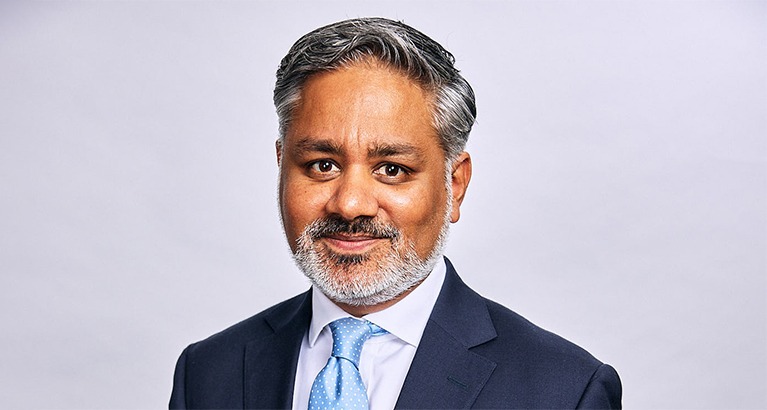Through his leadership, Byng has facilitated more than CA $1 billion in economic partnerships for First Nations to leverage their assets. He believes that economic development can raise all people and thereby help ensure that Indigenous peoples experience the same health, educational and economic outcomes as other British Columbians.
Byng is particularly proud to have been nominated by 3 chiefs, all former recipients of the award with whom he has worked in the past. He says, “It was very humbling to be nominated by 3 well-known Indigenous leaders: the Chief of the Osoyoos Indian band, the former Chief of the Tsawwassen First Nation, and a former Chief of the Haisla Nation in the North.”
Economic reparation of historical injustices to Indigenous peoples
Byng’s commitment to economic reconciliation with Indigenous peoples is something that has grown organically rather than the result of a conscious decision. He grew up in very small towns in rural Canada where there are larger populations of Indigenous peoples. With many Indigenous friends, even as a child, he could see the racism that was still acceptable. He remembers one particularly poignant incident when, at the age of 15, he had a summer job working as a labourer on a pipeline project. A consultant working on the project offered Byng a ride back to the camp, a considerable distance away, but didn’t offer the same to Byng’s Indigenous co-worker. Byng says “I didn’t speak up, but I didn’t take the ride and just walked back to camp with my co-worker. That stuck in my mind as I had Indigenous friends. As you become more successful in life, you remember those incidents.”
Byng has been committed to reconciliation ever since and, while he is empathetic to the social issues experienced by Indigenous peoples, such as lower healthcare outcomes and higher levels of incarceration or drug addiction, he admits that these are areas in which he doesn’t have expertise. Instead, he is focused on empowering Indigenous peoples from an economic perspective. “We focus on jobs, education, training and ownership of business, ownership of projects. These are the things that I understand. I’m involved with natural resources and large-scale infrastructure, and so that’s the place where I can be of help.”
Redressing the balance with mutually beneficial opportunities
Byng has been involved in several groundbreaking economic reconciliation initiatives, including working with the Squamish Nation to implement the first ever Indigenous-led environmental assessment in Canada. At the time, he was working for a company on a project to build a liquified natural gas export facility. The company wanted to accommodate work with the Squamish people, who were concerned about the environmental impact of the project. However, the Squamish people not only wanted to be part of the process but also to run their own environmental assessment and to evaluate the project for its impact on them as a people; they wanted to run it from a cultural perspective. According to Byng, “the federal government didn’t actually allow this; my lawyers were pulling their hair out. They said you might have to go to court. But I said I’m not going to court; I’m going to get a deal. And, working with some very intelligent leaders within the Squamish Nation, we came up with the process, we built it, and we ran it for a couple years in the face of the winds from government.” This process eventually led to federal and legislative changes allowing Indigenous-led environmental assessments.
Sometimes being innovative is not so much trying to be innovative, it’s more about doing the right thing and how that is considered innovative.
Byng was also instrumental in negotiating the first ever agreements between operating mines and Indigenous peoples in British Columbia. These so-called benefits agreements between a company and a community establish a revenue stream for communities impacted by development projects. They give a voice to people in infrastructure planning and land development processes – especially those people who have been historically excluded or marginalised from these processes and decisions that affect them. Byng comments that, although now very common, 20 years ago this kind of agreement didn’t exist. He continues, “At the time, I didn’t realise they were innovative. It just seemed like the right thing to do, and sometimes being innovative is not so much trying to be innovative, it’s more about doing the right thing and how that is considered innovative.”
First Nations own equity positions but none of them actually run one
Byng’s current passion is to empower Indigenous peoples to have a majority share in high-impact projects. “Equity ownership of major projects, whether they’re in the natural resources sector or elsewhere, is a really big deal in countries such as Canada and Australia where there are larger Indigenous populations.” Byng continues, “If we’re going to build a mine in the traditional territories of Indigenous peoples who have lived there for thousands of years, maybe we should make them owners. But it’s not that simple. Due to the vestiges of colonial law, these people can’t borrow money against what they own. Access to capital is a major issue.”
When a First Nation goes to the bank to borrow money to invest in a mine or a powerline, they are borrowing at a higher rate than the return. Byng says, “So the big thing we’re dealing with right now is making the system a fair system, a less discriminatory system. These are pretty simple business concepts, but it’s remarkable how difficult it can become. We need to convince levels of government to provide the necessary backstop so Indigenous peoples can borrow for these projects.”
He concludes, “the big thing I would love to be part of is to see and enable the first Indigenous peoples to own a mine in Canada. So that’s where I’m headed, and that’s exciting.”





